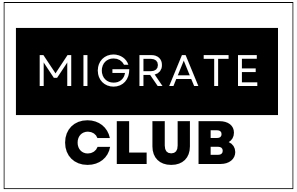When it comes to obtaining a student visa for Schengen countries, the ease of the process can vary depending on several factors. Your nationality, the specific country you’re applying to, the institution you’ve been accepted to, and the documentation you provide are all key factors.
The Schengen Area is a zone comprising 27 European countries that have abolished passports and other types of border control at their mutual borders. This border-free area encompasses most European Union (EU) countries. Well, except for Cyprus and Ireland. Now this mutual agreement provides for the free movement of every EU citizen to travel, work, and live in an EU country without special formalities and no subjection to border checks.
Some of these countries include Austria, Belgium, Czech Republic, Denmark, France, Germany, Greece, Hungary, Italy, Netherlands, Poland, Portugal, Spain, and Sweden.
Aside from this, some countries have relatively straightforward processes for obtaining student visas. Read on to discover which Schengen countries are easiest to get a student visa.
Do I need to apply for a Schengen visa?
First things first. You’ll want to be sure whether or not you even need a Schengen visa in the first place. And if you’re traveling to one of the 27 countries in the Schengen zone for studies – here’s how you know for sure.
Which travelers don’t need a Schengen visa (for stays of less than 90 days)?
You don’t need a Schengen Visa for short stays if you:
- Are already a national of the Schengen area
- Have already had a visa issued by one of the member countries of the Schengen area (under the condition that your stay in the Schengen area does not exceed 90 days per period of 180 days).
- Are nationals of non-EU countries and territories that have signed visa exemption agreements with the EU.
You will, however, need a Schengen visa to go to the Schengen zone if you are a citizen of one or more countries that don’t have a visa waiver agreement with the EU.
This includes nearly a hundred nations around the world:
- Africa
- Most of Asia and the Middle East
- China, India, Russia, and so on.
The Schengen Countries with Easy Student Visa Process
Germany
Germany has a welcoming approach to international students with a straightforward visa application process for students. The country has a tuition-free or low-tuition education system and a transparent and efficient visa application. There are different types of German student visas available depending on your course and its duration.
The German Student Visa processing time usually takes up to 25 days. However, in some cases, it might take up to 6-12 weeks.
Also Read: 10 Most Popular U.S. Visa Interview Questions and Answers
France
France has an excellent educational standard and an easy visa application process. The country is one of the most popular study-abroad options for international students like you. There are various types of French student visas available depending on the duration of the course. There i the short-stay visa with which you can visit France for as long as three months of study time. This means, without obtaining a French residency permit. You can apply for this visa if they are enrolled in short-term or language courses.
The short-stay visa is also ideal for attending interviews or appearing for entrance exams. There is also a long-stay visa with which you can enter France and stay for longer than 3 months. It usually lasts for the duration of the course. And of course, the internship visa is ideal for students who want to go to France for an internship. To be eligible, you must provide the agreement between your employer, your institution, and you, the intern.
The processing time for a French student visa varies according to the visa type and country. However, the process typically takes about 2 to 3 weeks. The fee for a French student visa ranges between €50 – €99. The visa success rate of France’s student visa is generally 90%. The 10% French visa rejection rate is usually due to applicants not meeting the essential eligibility criteria and documentation requirements.
Spain
Spain is another popular destination for international students. The visa process is generally straightforward for students. Those studying in Spain for less than 90 days do not need a student visa. However, depending on your nationality, a short-stay visa may be required. There are three main types of student visas for international students wishing to pursue their studies at Spanish universities. This depends on your nationality and your program’s duration.
You’ll need a short-term student visa or a 180-day D-type visa to undergo a study course that lasts up to 180 days. These student visas have a less complicated application process and cannot be extended. Through a short-term student visa, you can take up any short course. If the course duration is longer than 180 days, then apply for a long-term student visa to Spain.
The long-term student visa to Spain allows you to undertake courses longer than six months in Spain. You will be eligible to enroll in undergraduate or postgraduate degree programs and reside in Spain for the duration of your study program. The application process for this type of visa requires more paperwork than the previously mentioned type of visa. You will need to provide proof of financial resources and medical insurance.
After obtaining a long-term Spanish student visa, international students should also apply for a student residence card within a month after arrival.
Italy
Italy offers a relatively simple student visa process, especially for students enrolled in accredited universities or educational programs. It is noteworthy that citizens from some non-EU/EEA countries do not need to apply for a visa if they plan to stay in Italy for less than 90 days. These include those from the United States of America, Australia, Hong Kong, New Zealand, and Ukraine. However, those who need to register for a visa will apply based on how long they intend to stay in Italy and the intended course of study:
- Short-stay visa (type C) – if you apply for a language or a short course that lasts less than 90 days
- Long-stay visa (type D) – if you apply for any degree course that has at least 20 hours of courses per week (or 80 hours per month) and lasts more than 90 days.
You can find out if you need a visa by answering a few simple questions on the official Visa for Italy website.
Also Read: How to Choose the Best Country to Do Your Masters’ Degree Abroad as a Nigerian
Poland
Looking for an appealing and budget-friendly study-abroad destination for your studies? Polish universities are globally recognized for offering world-class education with highly valuable degrees. Poland is also considered one of the safest countries with a low crime rate.
Types Of Polish Study Visa:
The “C” Type: This is a short-term Schengen visa that allows visa holders to stay in Poland for ninety (90) days for a total time of one hundred and eighty days (1800 days.
The “D” Type: This is a long-term National visa that allows visa holders to stay in Poland and travel around the Schengen area for up to 90 days. This visa is valid for up to one year.

























